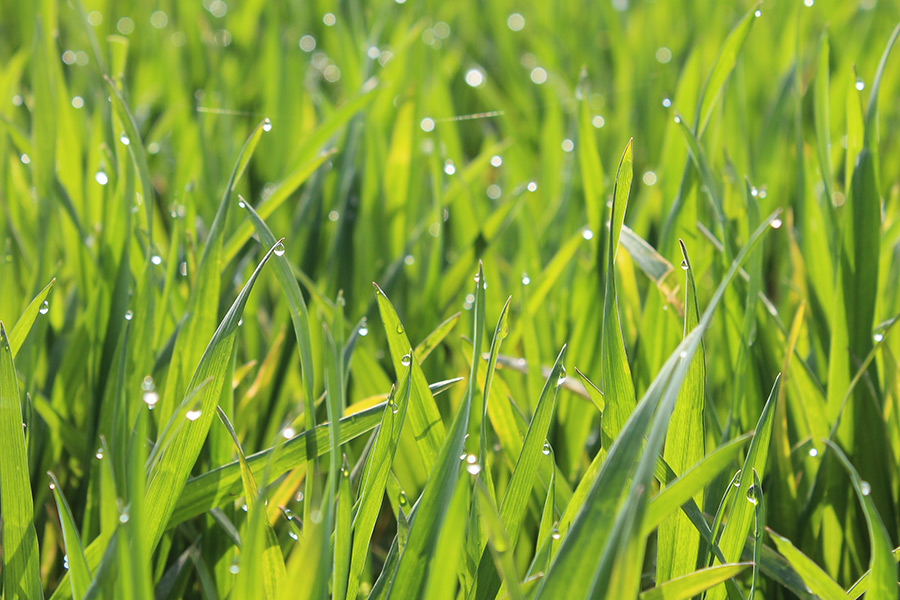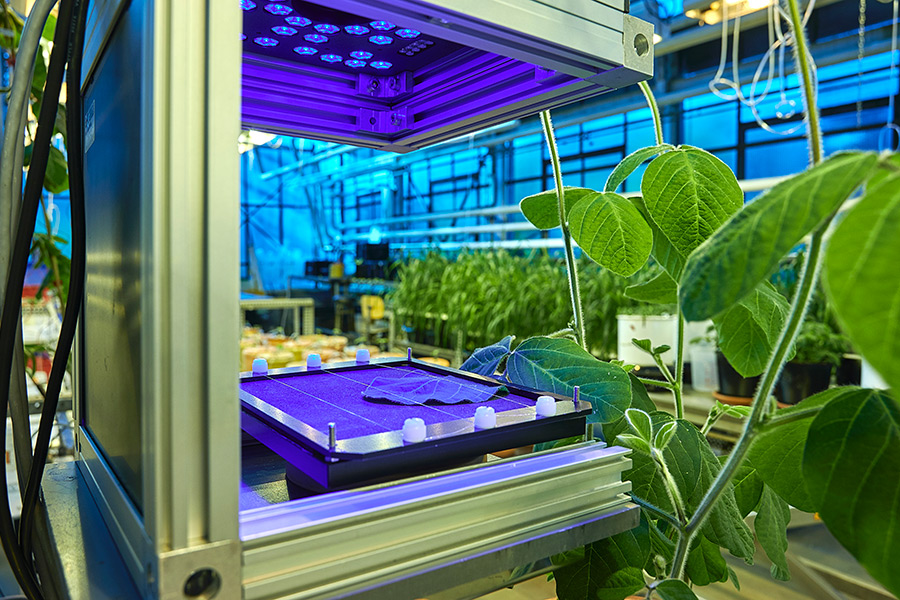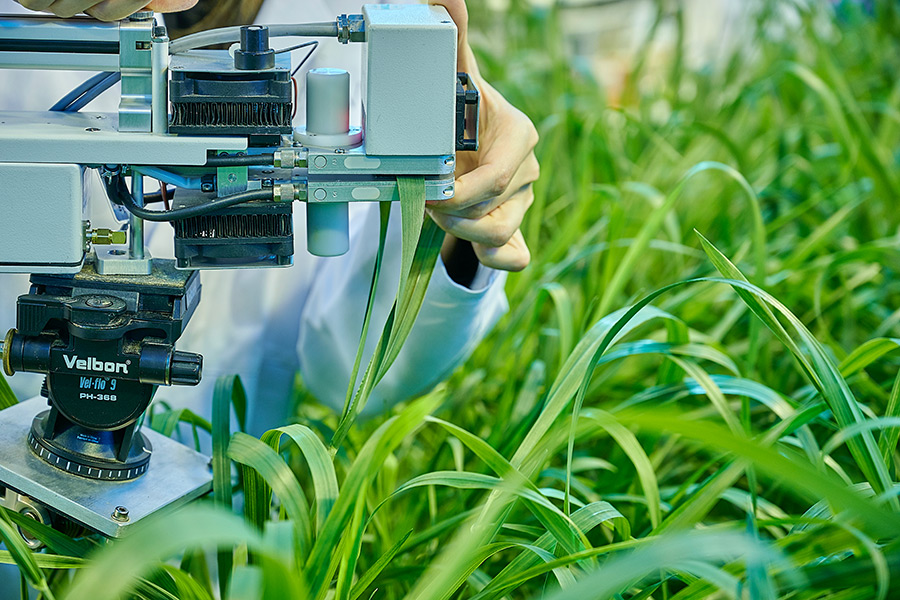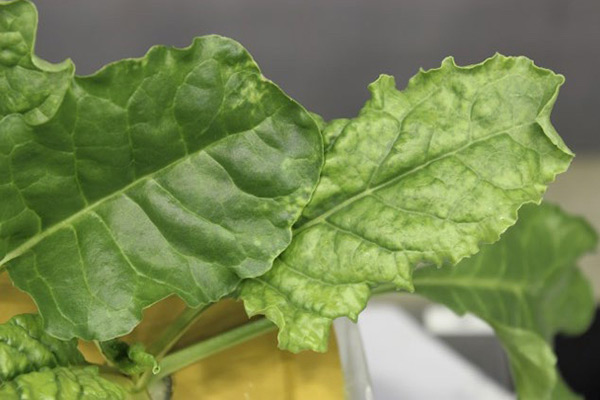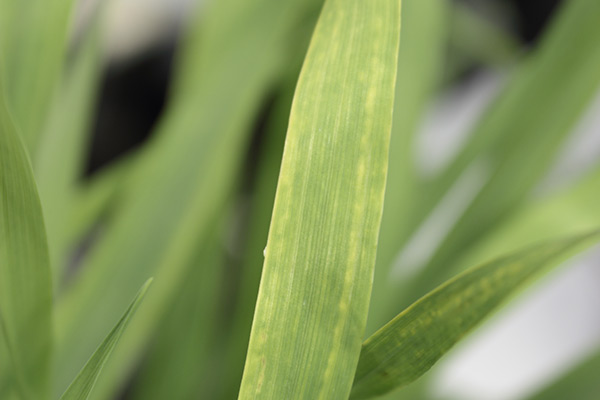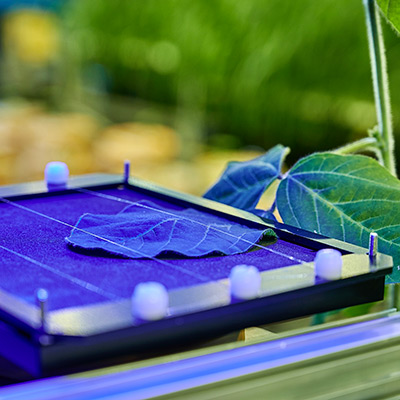Research
Photosynthesis is a highly coordinated process in plants which provides the plant with metabolic energy and carbon molecules and generates oxygen as a byproduct.
Photosynthesis takes place in the chloroplast. Chloroplasts consist of an internal system of interconnected membranes, the thylakoids. On and in these thylakoid membranes, light harvesting complexes which are composed of pigments such as chlorophyll, and proteins of the photosystem I and II are bound. The pigments absorb the incident light, whose energy drives an electron transport through the photosystems which induces the synthesis of the energy-rich molecules ATP and NADPH. Part of the energy is used for the fixation of carbon dioxide (CO2) by the enzyme Rubisco which takes place in the stroma and generates sugar.
The processes of photosynthesis are influenced by numerous environmental factors such as nutrient and water availability. Under insufficient or excess nutrient and water supply, the CO2 assimilation rate decreases and the photosynthetic capacity is limited. For instance, under drought conditions the stomata aperture is reduced restricting CO2 diffusion into the internal leaf spaces and thereby CO2 supply to Rubisco.
Understanding the responses in the photosynthetic capacity to environmental stress factors, to mainly magnesium (Mg) and potassium (K) deficiency and drought, is a major research focus at IAPN. In order to assess the photosynthetic capacity, measurements of leaf gas exchange and chlorophyll fluorescence are used. The latter is a measure of re-emitted light from photosystem II as the absorbed light energy in the chlorophyll molecules does not only drive photosynthetic processes but is partly re-emitted as fluorescence. Hence, measurements of chlorophyll fluorescence give valuable information about the efficiency of photochemistry and thereby about the plants’ productivity.
Leaf gas exchange measurements assess the CO2 influx from the atmosphere into the leaf by infra-red gas analyzers. Both techniques, chlorophyll fluorescence and leaf gas exchange are non-invasive, hence allowing in-vivo observations in plants which are useful in monitoring the photosynthetic alterations under ongoing stress conditions.




